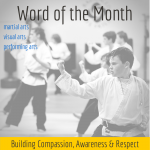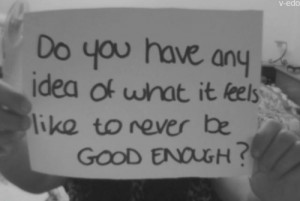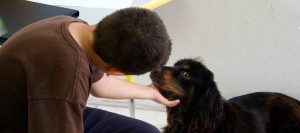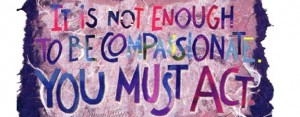Hunch your shoulders, twirl your mustache, stand in dark corners and people know that you are “the bad guy” but the best stories don’t have villains that are bad, simply for the sake of being bad. It takes a truly gifted actor or storyteller to show the very worst side of a person and still maintain their humanity the audience’s faith in that humanity. As audience members, we are captivated by good people who are painted into a corner to do things they would never want to do. Just look at your child’s face the next time that they ask to watch Frozen for the seventeenth time… that day!

Every actor and every story teller must be able to have compassion for their character and be able to elicit that compassion from the audience. It is more interesting to watch someone struggle between good and evil then to watch someone running around committing evil acts. If Michael or Vito Corleone simply relished in the dealings of a crime boss for the sake of “being bad” we wouldn’t have had the 374 minutes of the riveting Godfather movies, we simply would have had Scarface.

The responsibility of an actor and a storyteller are very closely related – to keep the audience’s attention. Each character has his own journey that started on the day that they were born and continues until the day that they die. The actor must be aware of significant events in the character’s life, prior to the story and what the character faces at the end of the story. When several character’s journeys intertwine in one story, we call one character’s portion their character “arch”. It is how they change throughout the story. When actors are preparing for a role, they breakdown every moment of every scene so that they know what their character wants at every moment or “beat”.
It is not good enough to say Hook wants to capture Peter Pan “just because”. This is not a strong choice as a storyteller or an actor. It is helpful to not distance yourself from the character. This implies judgment. Actors and Storytellers should strive for understanding. Distancing yourself from the character makes it more difficult to justify their actions. This is why many actors, depending on their method, will use the first person when referring to their character. A strong choice would be, “I want to capture Peter Pan because he is an insolent child and I should be the one to rule over Never Never Land.” Perhaps, later as the story unfolds you realize, “I want to capture Peter Pan because he reminds me of my lost childhood and until I eliminate this reminder I won’t be able to get back to the business of running my crew”. This would be part of your arch.

There are many methods for acting and story-telling and every rule is meant to be broken. A villain that just wants to “see the world burn” can still capture an audience’s attention. Heath Ledger and Christopher Nolan created a chaos-worshiping villain in The Dark Knight so unmoved by the suffering of others and the audience was hooked. However, in the same way that no one comes into the dojo on the very first day and breaks a board perfectly, ten consecutive times, no one should break these rules without diligent study and practice.
 Each month we will discuss a life skill with all of our students. This month the word is Confidence. This word will be defined in the following ways for our students.
Each month we will discuss a life skill with all of our students. This month the word is Confidence. This word will be defined in the following ways for our students.





